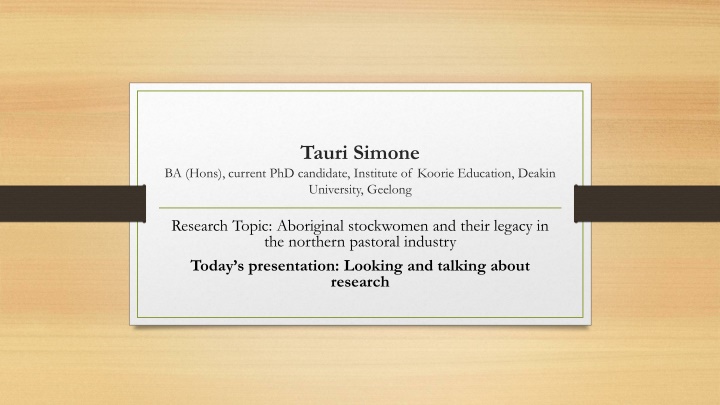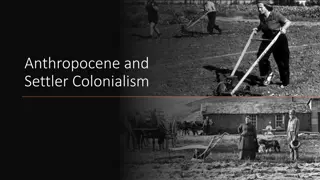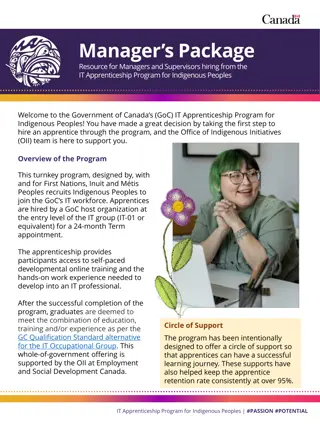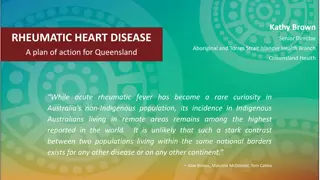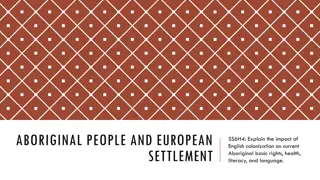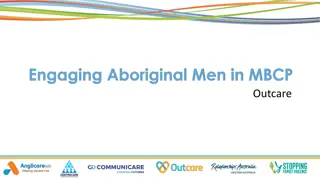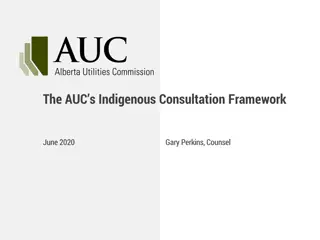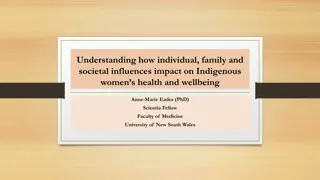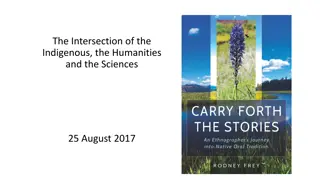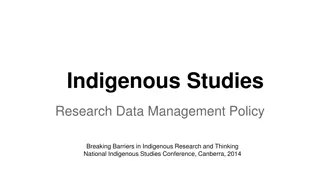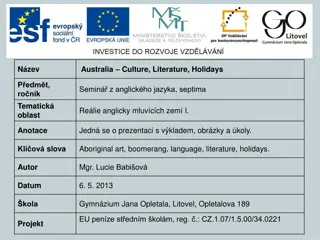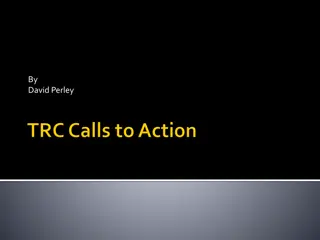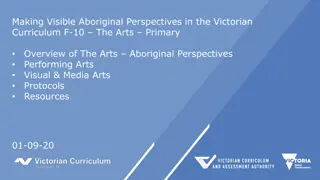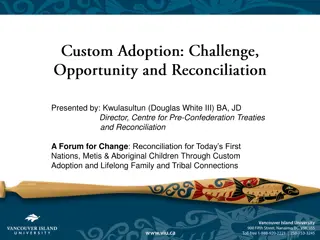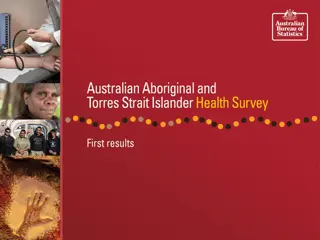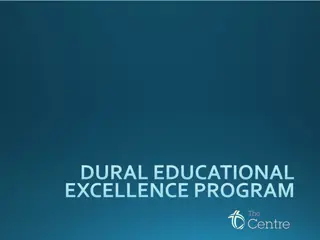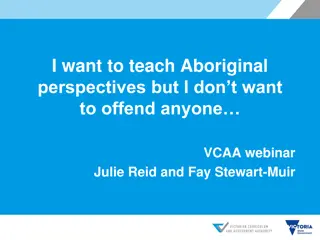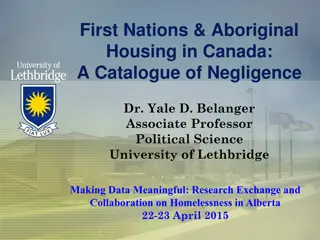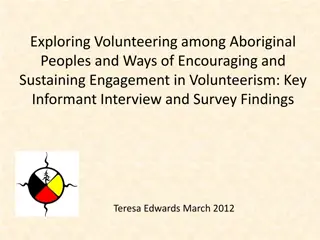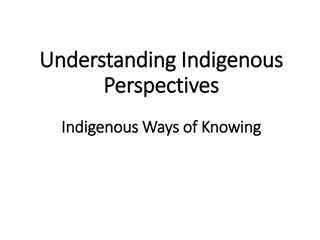Indigenous Research Approach: Respecting Aboriginal Knowledge
Simone Tauri, a Ph.D. candidate, presents her research on Aboriginal stockwomen's legacy in the pastoral industry. Her approach combines Western paradigms with Indigenous knowledge systems, emphasizing respectful relationships and the exchange of knowledge through yarning. She advocates for using culturally appropriate research methods that reflect Aboriginal circular knowledge.
Download Presentation

Please find below an Image/Link to download the presentation.
The content on the website is provided AS IS for your information and personal use only. It may not be sold, licensed, or shared on other websites without obtaining consent from the author.If you encounter any issues during the download, it is possible that the publisher has removed the file from their server.
You are allowed to download the files provided on this website for personal or commercial use, subject to the condition that they are used lawfully. All files are the property of their respective owners.
The content on the website is provided AS IS for your information and personal use only. It may not be sold, licensed, or shared on other websites without obtaining consent from the author.
E N D
Presentation Transcript
Tauri Simone BA (Hons), current PhD candidate, Institute of Koorie Education, Deakin University, Geelong Research Topic: Aboriginal stockwomen and their legacy in the northern pastoral industry Today s presentation: Looking and talking about research
Overview of my approach to the research: Multiversity (multi-faceted) approach combining Western paradigms and Indigenous knowledge systems Using researching back (applying an Aboriginal lens to the way history has been written) And the respectful, relationship-based approach of yarning (exchange of knowledge through the use of the spoken word), providing a voice for Aboriginal stockwomen within the pastoral industry
Concepts and theory underpinning my research Culture is an outward expression of spirituality Knowledge is the awareness gained from our experiences of the world and our awakening to this knowledge Research must use culturally appropriate methods that reflect the circularity of Aboriginal knowledge
To quote Tafoya, for Aboriginal people Stories go in circles. They don t go in straight lines. It helps if you listen in circles because there are stories inside and between stories, and finding your way through them is as easy and as hard as finding your way home. Part of finding is getting lost, and when you are lost you start to open up and listen (Tafoya 1995, cited in Wilson, 2004: 10).
Yarning Lived experience = Meaning, understanding and our own truths Yarning A means of transmitting knowledge The interweaving of knowledge experienced through the spoken word Respect and Relationships
Knowledge and Relationships Knowledge is a connection formed through experience of relationships. The researcher and participant are both teacher and student. Relational accountability is to participants and the research. The researcher is responsible for the transmission of the story.
Responsibility to community ______________________________________________________________________________ Conducting research in a culturally appropriate manner. Ensuring that the research is beneficial to the community. Interpreting the research gathered from contributors in a respectful and responsible manner. Fully involving contributors in ensuring that translation of the research material is true to their lived experiences.
Building relationships Forming relationships with participants is based on - Respect, Responsibility, Reciprocity and Relational accountability. First steps in building relationships is connecting me through relationships either with people, places or knowledge. Relationships are ongoing even once the research is complete.
Researching back Analysing historical literature through an Aboriginal lens. Critiquing political policies, laws relating to land tenure systems and the historical foundations of the pastoral industry. Unpacking and unmasking literature which is awash with patriarchal social structures/dynamics. Yarning and researching back enables a holistic approach to research.
Secondary sources accessed Historical literature Archival documents such as: Aboriginal protectors correspondence and reports Permit systems Land tenure laws Pastoral diaries
Addressing the lacuna in history Deductive method of analysis with an Aboriginal lens Infer information from secondary sources Collate and analyse current material Identify themes and patterns Infer conclusions
Autoethnography Insider/outsider perspective Authoritative voice into otherwise unknowable worlds Formulate knowledge of Aboriginal stockwomen Experience from an Aboriginal perspective Insight into the hardships of living in rural remote Australia
Conclusion Greater understanding of cultural and historical foundations Understanding of cultural relationships Culturally appropriate and holistic approach to research Providing a voice, recognition and acknowledgement Knowledge base for the children of the future
References Bessarab, D and Ng andu, B 2010, Yarning about Yarning as a Legitimate Method in Indigenous Research , International Journal of Critical Indigenous Studies, Vol 3, no 1, pp 45-50. Hammersmith, JA 2007, Converging Indigenous and western knowledge systems: implications for tertiary education , PhD thesis, University of South Africa. Houston, J 2007, Indigenous autoethnography: formulating our knowledge, our way ,The Australian Journal of Indigenous Education, Vol 36, supplement, pp 37-50. Martin, K 2003, Ways of knowing, ways of being and ways of doing: a theoretical framework and methods for Indigenous re-search and Indigenist research. Voicing Dissent, New Talents 21C: Next generation Australian studies, Journal of Australian Studies, 76, pp 203-214. Rigney, LI 2001, A first perspective of Indigenous Australian participation in science: framing Indigenous research towards Indigenous Australian intellectual sovereignty, Flinders University. Wilson, S 2004, Research as Ceremony: articulating an Indigenous research paradigm , PhD thesis, Monash University. Wilson, S 2008, Research is Ceremony: Indigenous research methods, Fernwood Publishing, Canada.
Thank you Any Questions, Critiques, Comments
